
The Trinity Bridge is one of the bridges across the Neva River in St. Petersburg.
Troitsky Bridge is one of the oldest, most beautiful and longest bridges in St. Petersburg.
The popularity of the bridge is also given by the fact that the Trinity Bridge is a drawbridge.
The Trinity Bridge connects the central part of St. Petersburg-1st Admiralteiskiy Island (Dvortsovaya Embankment) and Petrogradsky Island (Petrovskaya Embankment).
Upstream of the Trinity Bridge is Liteyny Bridge, downstream - Palace bridge.
The total length of the bridge is 582 meters, and its width is 23.5 meters.
Trinity Bridge consists of 10 spans, which are a combination of cantilever-arch and cantilever-beam trusses.
The left-bank permanent span is covered by a steel-reinforced concrete superstructure. The right bank is connected to the metal part of the bridge by a three-span stone arcade with a length of 89.9 meters. The arcade was built according to the project of G. G. Krivoshein and consists of boltless stone vaults on a pile base with three arched openings (holes) lined with granite.
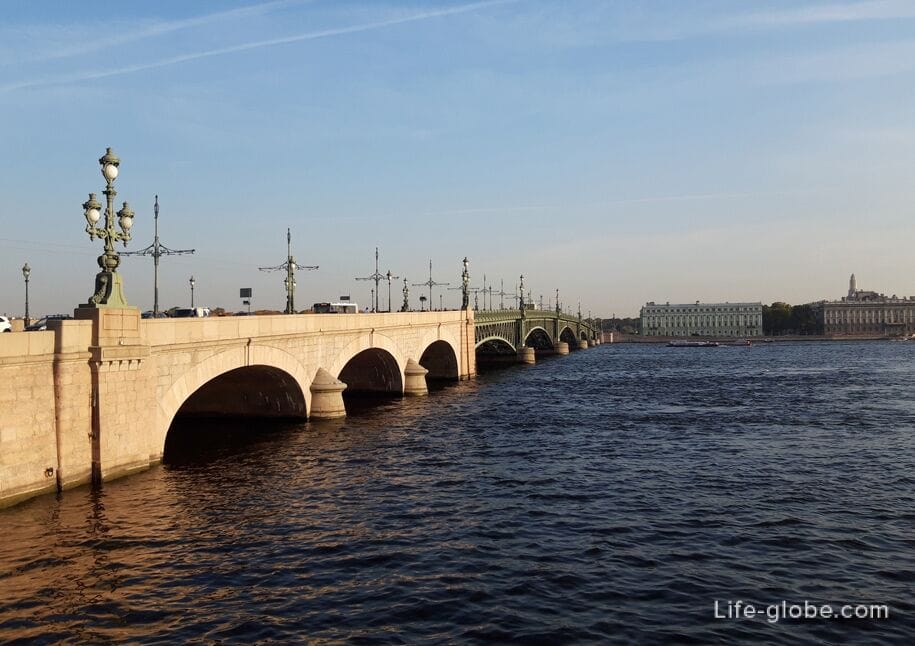
Cast-iron railings of artistic casting are installed on the permanent spans of the bridge.

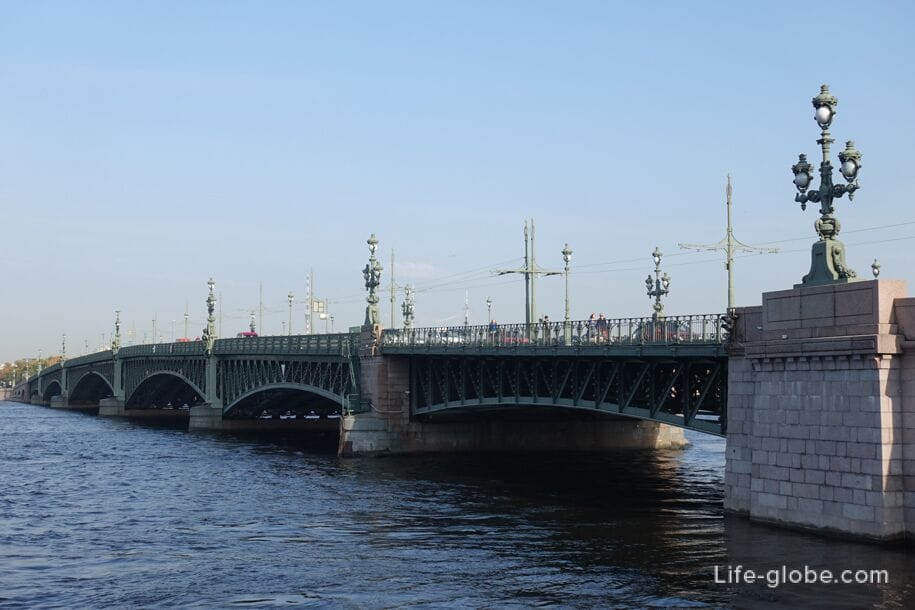
View of the Trinity Bridge from the Peter and Paul Fortress

Trinity Bridge is decorated with granite obelisks, which, in turn, are decorated with double-headed eagles and bronze rosters - the bow figures of ships.
The pedestals of the columns are made of pink granite, the obelisks are made of red polished granite.
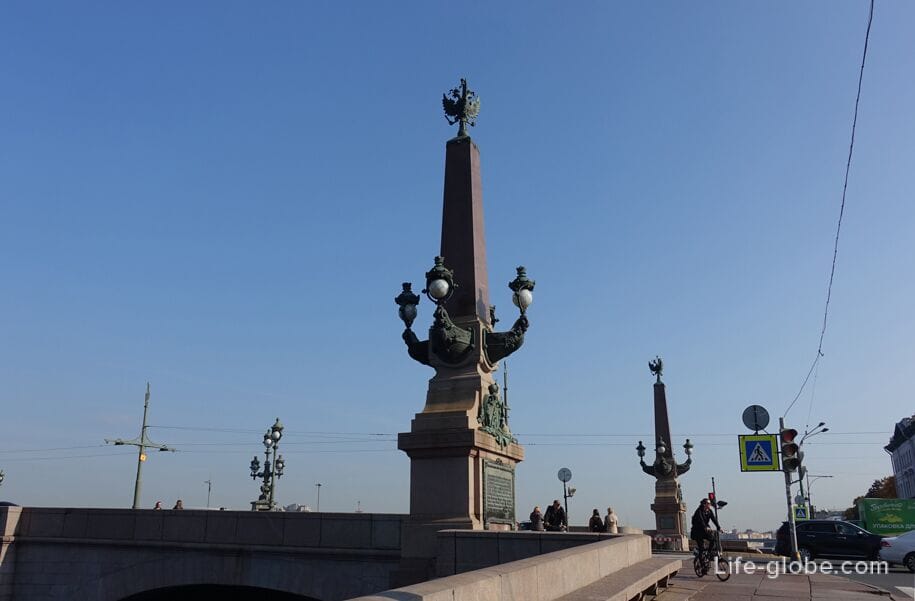
For lighting on the bridge, 16 large candelabra with three plafonds and 24 small candelabra with one plafond are installed.
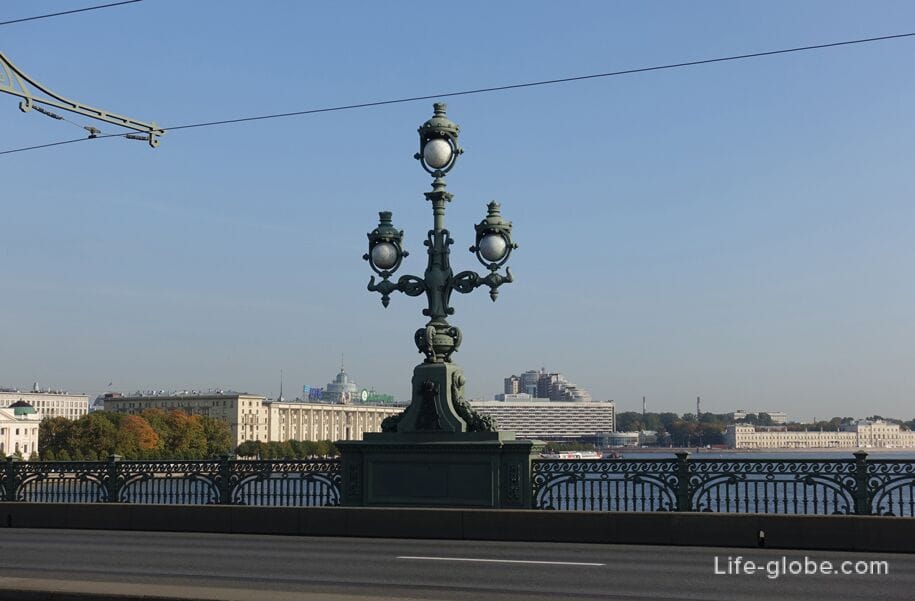
The bridge is a roadway and pedestrian.
The central part of the bridge-passing in both directions, including tram tracks on the bridge. The tourist tram (T1) also runs on the bridge.
On both sides of the bridge there are pedestrian sidewalks, fenced with railings.
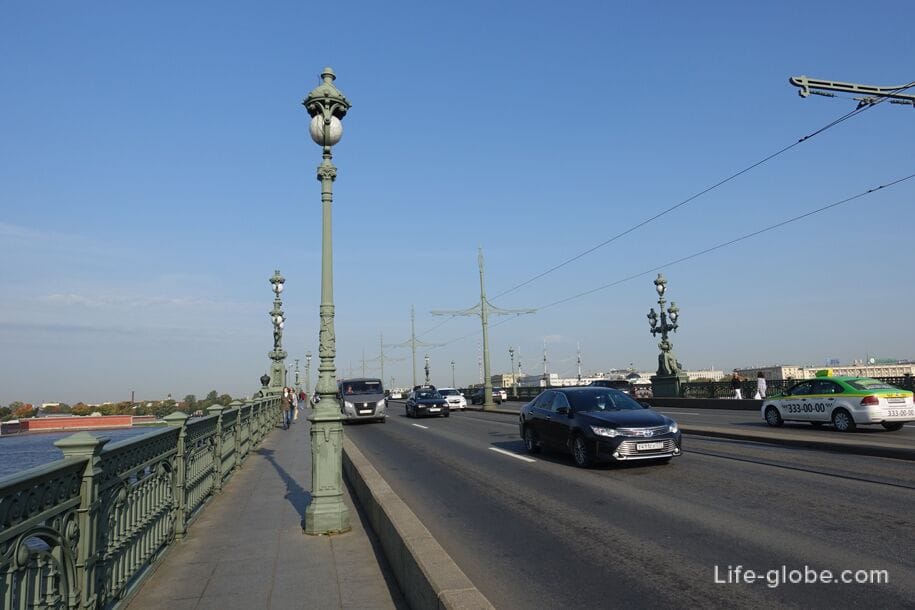
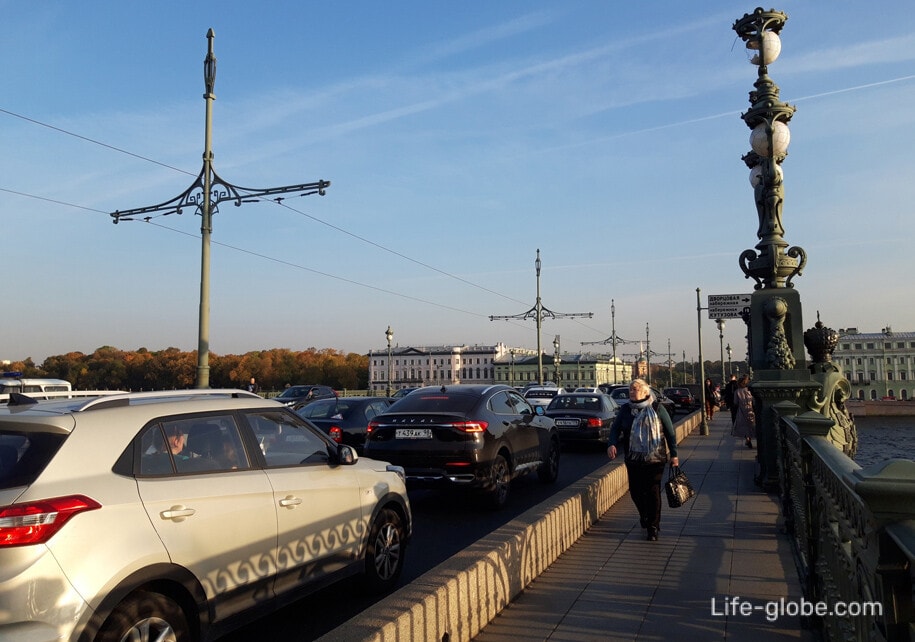
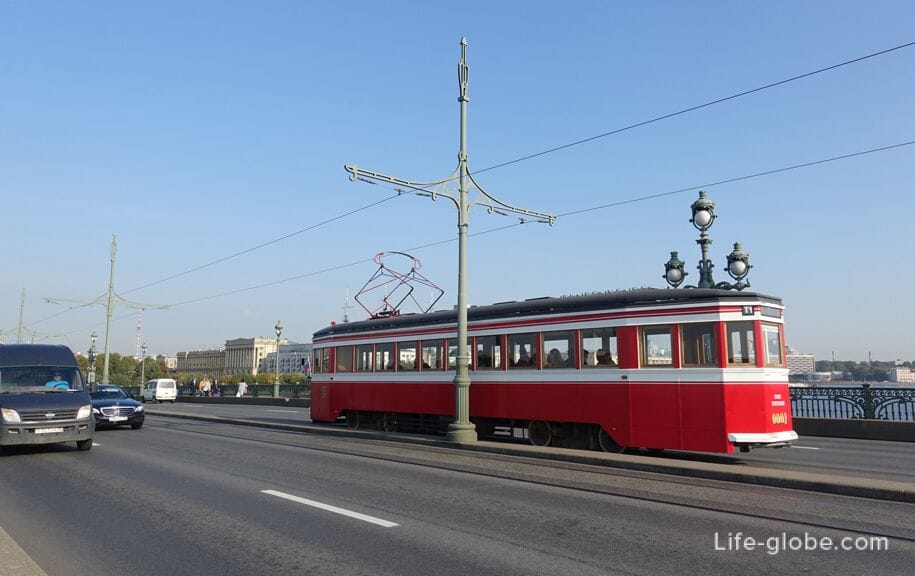
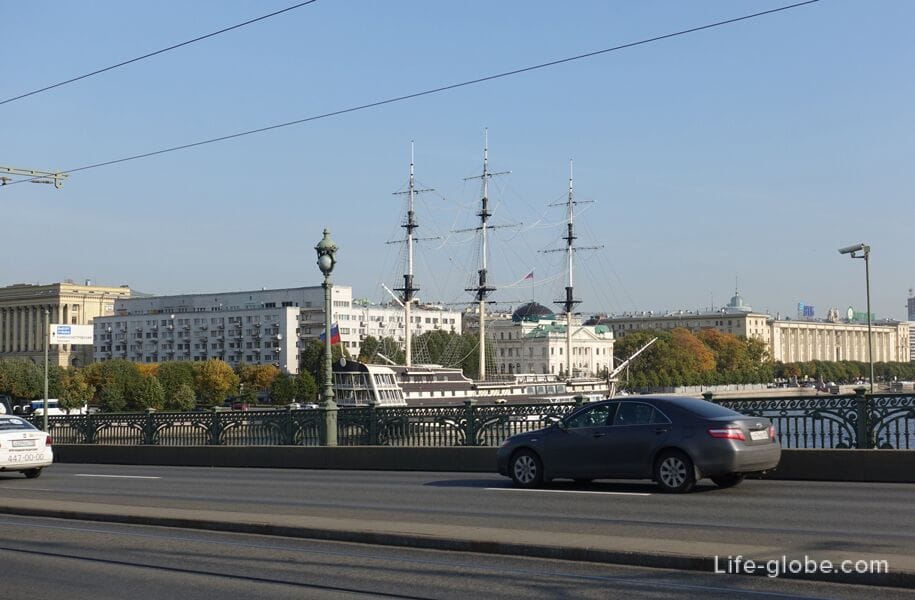
One of the most popular sights in St. Petersburg is the drawing of bridges.
In total, 9 bridges are regularly built in the city, and three more on preliminary applications.
Bridges in St. Petersburg are built regularly, annually - from April to November, at night.
Troitsky Bridge is the second bridge to be built, after the Palace Bridge.
At the Troitsky Bridge, the extreme span is raised at the left bank (at the Palace Embankment). It is most convenient to observe the divorce of the Trinity Bridge from the Palace Embankment.
Adjustable single-wing span metal all-welded with a fixed axis of rotation and a rigidly fixed counterweight. The opening of the draw span is 43 meters in the light. The wiring is carried out using a hydraulic system.
Metal grilles are installed on the drawbridge span. Read more about the divorce of all bridges in St. Petersburg (with photos)…
The time of bridge construction may vary. We recommend that you check the exact time of the bridges in St. Petersburg, including the Trinity Bridge, on the official website: mostotrest-spb.

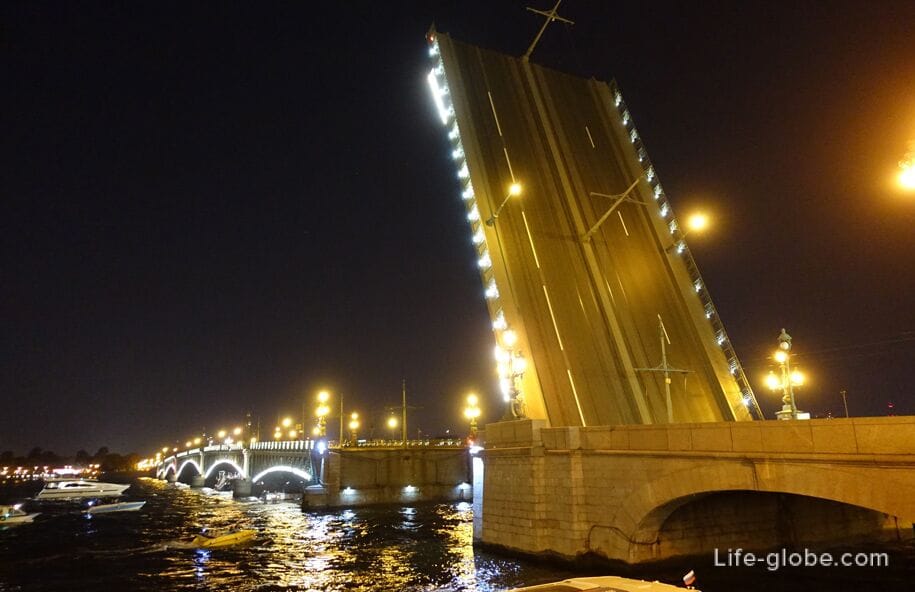
The Trinity Bridge offers beautiful panoramic views, including the Neva River, the Palace Embankment, the Palace Bridge and the Peter and Paul Fortress.
View from the Trinity Bridge to the Palace Embankment and the Palace Bridge
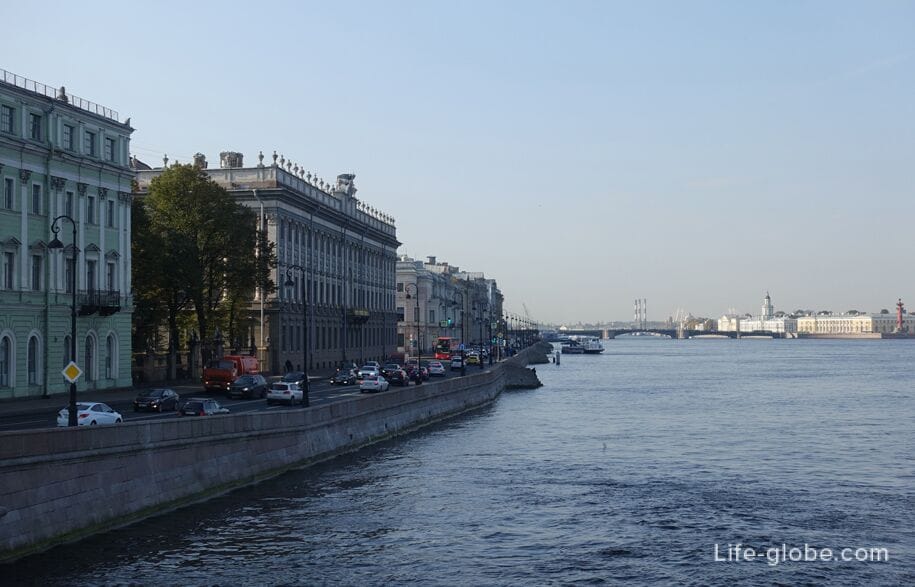

View from the Trinity Bridge to the Neva River, Palace Bridge, Birzhevoy Bridge and Vasilievsky Island
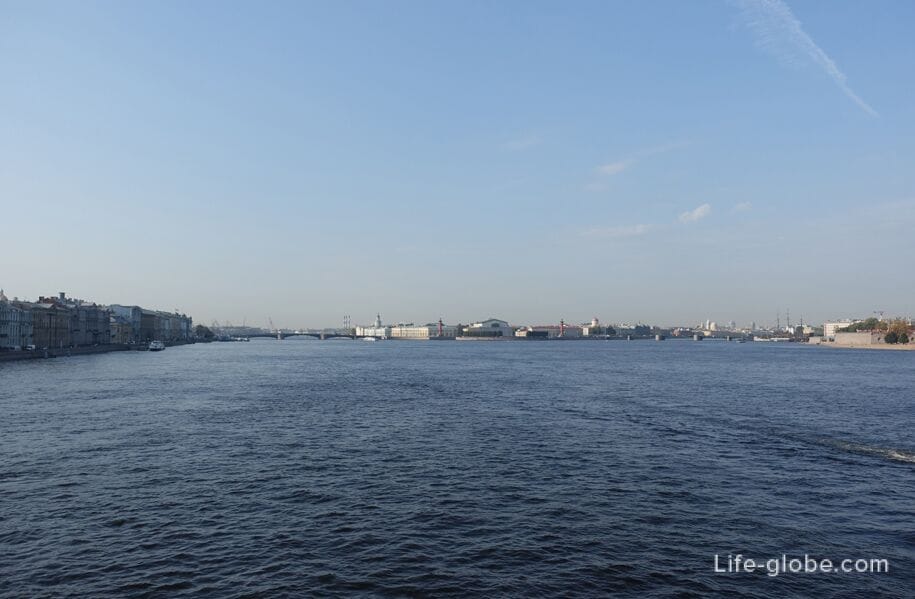
View from the Trinity Bridge to the Peter and Paul Fortress

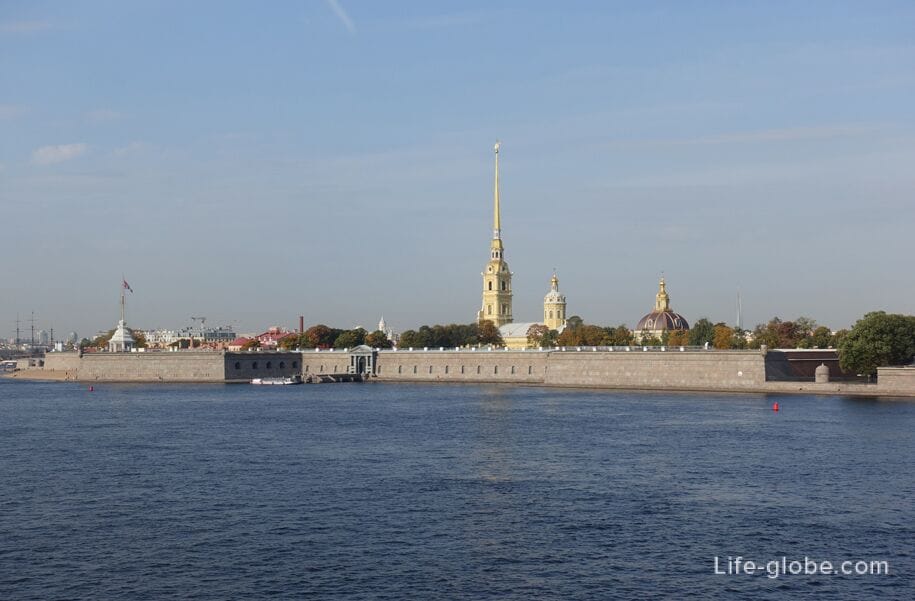
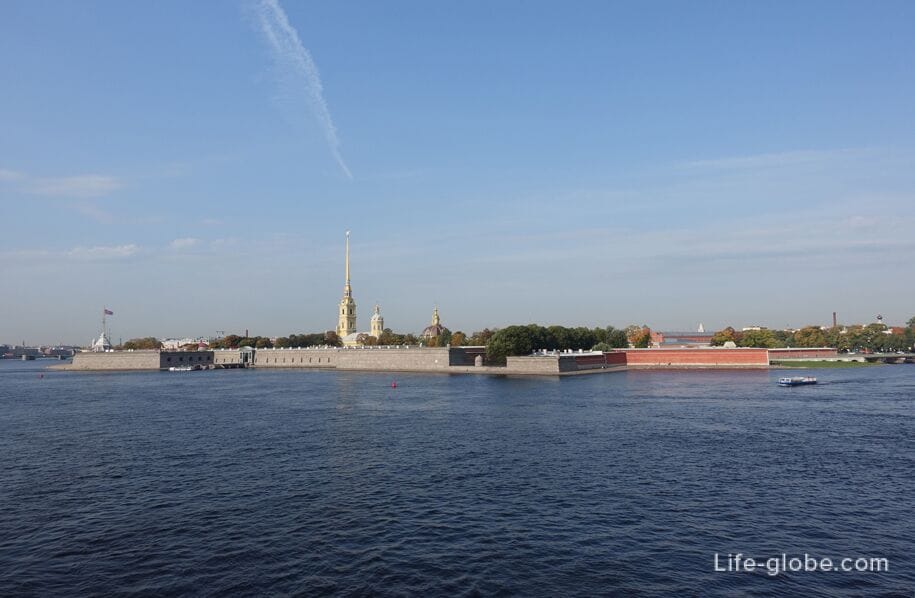
The first crossing in this part of the city appeared in 1803 just upstream and was a floating bridge consisting of wooden barges-plashkoutov. The ferry crossed the Neva River from the Summer Garden to the house of Peter the Great. The crossing was called the Petersburg Bridge.
In 1827, the plashkoutny bridge was moved slightly downstream and built on the site where the Trinity Bridge is located today. The new bridge was named "Suvorovsky" - in honor of the square where today there is a monument to the Russian commander Alexander Suvorov.
View of the monument to A.V. Suvorov. Behind the monument is the Field of Mars. Photo taken from the Trinity Bridge

At that time, the Suvorov Bridge was the longest of the floating bridges in St. Petersburg (more than 500 meters in length), and stood out for its magnificent decoration: portals, railings, lampposts with double - headed eagles-all cast-iron architectural details were covered with gold leaf.
In 1876, a horse-drawn railway (a horse-drawn tram, the predecessor of the tram) was opened on the bridge. An open carriage was drawn by a pair of horses on rails laid over a reinforced bridge.
In the 1890s, the authorities of St. Petersburg decided to build a permanent crossing over the Neva River. An international competition was held for this purpose. The best project was recognized by the French company "Batignol", which proposed a new technology that allowed to reduce the consumption of metal in the bridge structure.
The Trinity Bridge was laid in August 1897 in the presence of the President of France.
On May 16 (May 29, new style), 1903, during the celebration of the 200th anniversary of the capital of the Russian Empire, the opening ceremony of the bridge was held, which was attended by Emperor Nicholas II and members of the imperial family. The king pressed a button and activated the huge electric motors of the drawbridge span.
The name" Troitsky", the bridge received from the Trinity Cathedral, which was located on the Petrograd side until 1933.
During its history, the bridge has had several names: in 1918, it was called the Equality Bridge, in December 1934, the bridge was renamed Kirovsky-in memory of the Soviet politician S. M. Kirov. The historical name "Troitsky" was returned to the bridge on October 4, 1991.
During its existence, the Trinity Bridge was repaired and reconstructed several times.
In 1965-1967, a complete reconstruction of the draw span of the bridge was carried out - the two-wing draw span was replaced with a single-wing one. Modernization of the structures and mechanisms of the draw span occurred at the end of the 20th century.
Troitsky is the only bridge in St. Petersburg that is built on the holiday of graduates of the "Scarlet Sails". Since 2005, a sailboat, a symbol of the festive evening, has been slowly entering the draw span of the bridge on this day.
There is a point at the top of the bridge that points to the middle of the bridge. The point can be found on the railing - where the lattice patterns change the slope.
The axis of the Trinity Bridge in the northern part crosses the Pulkovo meridian.
According to one legend, the famous pilot Valery Chkalov, to win the heart of his bride, made a daring flight under the Trinity Bridge, almost touching the wheels of the water. This is described in the film "Valery Chkalov". On the set of the film in 1940, the stunt pilot Yevgeny Borisenko flew under the bridge six times.
All accommodation facilities in St. Petersburg, including in the city center and more remote from it, can be viewed and booked here